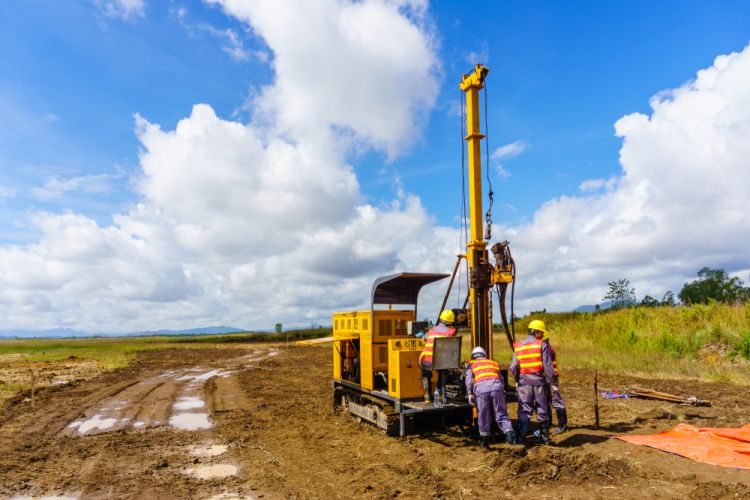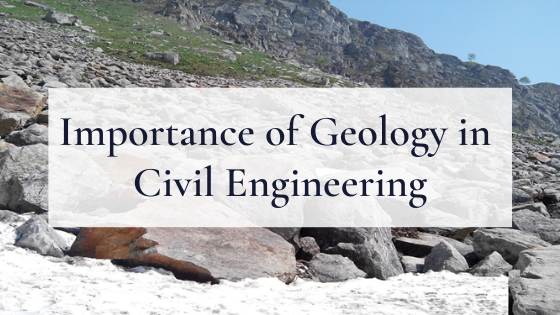6 Easy Facts About Specialized Geotechnical Engineering Solutions Explained
The Definitive Guide for Specialized Geotechnical Engineering Solutions
Table of ContentsThe Buzz on Specialized Geotechnical Engineering SolutionsThe Of Specialized Geotechnical Engineering SolutionsThe 7-Minute Rule for Specialized Geotechnical Engineering SolutionsSome Known Facts About Specialized Geotechnical Engineering Solutions.An Unbiased View of Specialized Geotechnical Engineering SolutionsSome Ideas on Specialized Geotechnical Engineering Solutions You Should Know
William Rankine, an engineer and physicist, created an alternate to Coulomb's earth stress theory. Albert Atterberg created the clay consistency indices that are still used today for dirt classification. In 1885, Osborne Reynolds identified that shearing causes volumetric dilation of thick products and tightening of loosened granular materials. Modern geotechnical design is said to have actually begun in 1925 with the magazine of Erdbaumechanik by Karl von Terzaghi, a mechanical engineer and rock hound. Terzaghi additionally created the framework for concepts of bearing ability of foundations, and the concept for forecast of the rate of settlement of clay layers due to consolidation. After that, Maurice Biot totally established the three-dimensional dirt consolidation concept, expanding the one-dimensional model formerly established by Terzaghi to more basic theories and presenting the set of standard equations of Poroelasticity.
Geotechnical designers explore and establish the properties of subsurface conditions and products. They also create equivalent earthworks and retaining frameworks, tunnels, and structure foundations, and may oversee and evaluate sites, which may better involve site monitoring along with the threat assessment and mitigation of all-natural threats. Geotechnical designers and design geologists carry out geotechnical investigations to obtain info on the physical residential or commercial properties of soil and rock hidden and beside a site to develop earthworks and structures for recommended frameworks and for the fixing of distress to earthworks and structures brought on by subsurface conditions.
The Main Principles Of Specialized Geotechnical Engineering Solutions
, which utilizes a thick-walled split spoon sampler, is the most common method to accumulate disturbed samples.

If the interface in between the mass and the base of an incline has a complex geometry, slope security evaluation is tough and numerical option approaches are required. Normally, the interface's precise geometry is unidentified, and a streamlined user interface geometry is assumed. Finite inclines need three-dimensional models to be evaluated, so most slopes are examined thinking that they are infinitely broad and can be represented by two-dimensional designs.
The Basic Principles Of Specialized Geotechnical Engineering Solutions

Measurement of amounts and analysis of actual conditions. It is unsuitable for tasks whose layout can not be modified during building.
Principles of Geotechnical Design. Dirt Technicians and Structures. Disturbed dirt buildings and geotechnical layout, Schofield, Andrew N., Thomas Telford, 2006.
Get This Report on Specialized Geotechnical Engineering Solutions
and Kovacs, W. (1981 ), An Introduction to Geotechnical Engineering, Prentice-Hall, Inc. Deep Scan Technology (2023 ): Deep Check Tech uncovers concealed structures at the site of Denmark's highest structure. "Geofrost Coring". GEOFROST. Fetched 20 November 2020. Han, Jie (2015 ). Principles and Practice of Ground Improvement. Wiley. ISBN 9781118421307. RAJU, V. R.
Ground Renovation Technologies and Instance Histories. Singapore: Study Posting Services. p. 809. ISBN 978-981-08-3124-0. Ground Enhancement useful source Concepts And Applications In Asia. Pariseau, William G. (2011 ). Layout evaluation in rock auto mechanics. CRC Press. Hegde, A.M. and Palsule P.S. (2020 ), Efficiency of Geosynthetics Reinforced Subgrade Subjected to Repeated Lorry Loads: Experimental and Mathematical Research Studies.
Cengage Discovering, Stamford, 666 p. Atkinson, J., 2007. The technicians of dirts and foundations. Taylor & Francis, N.Y., 442 p. Floating Offshore Wind Generators: Reactions in a Sea state Pareto Ideal Layouts and Economic Evaluation, P. Sclavounos et al., October 2007. Nicholson, D, Tse, C and Cent, C. (1999 ). The Observational Approach in ground design principles and applications.
The Ultimate Guide To Specialized Geotechnical Engineering Solutions
These reports are tailored to satisfy the details requirements of a project and include style criteria and recommendations for the construction of a range of man-made structures. In addition to providing consultancy services covering areas such as incline security and load-bearing abilities for various products, these engineers take on r & d tasks to enhance approaches, tools, materials expertise and analysis covering whole lifecycles (Specialized Geotechnical Engineering Solutions).
Design the residential or Website commercial properties and technicians of rocks including the application of characteristics, fluid technicians, kinematics and material mechanics. This combines geology, dirt and rock auto mechanics, and architectural engineering for the design and building of structures for a variety of civil engineering tasks. This area entails predicting the performance of structure content dirt and rock to a load imposed by a framework, while thinking about efficiency, economic climate and safety.
Prices of pay generally increase as your understanding and abilities expand, with guidelines directing to a graduate starting salary of between 18,000 and 28,000 per year in the UK. This rises to 26,000 to 36,000 with a couple of years of experience and then getting to 40,000 to 60,000+ for senior, chartered or master designers.
Excitement About Specialized Geotechnical Engineering Solutions
However, with the appropriate application it is feasible to understand the profession and gain entry to a difficult yet satisfying and vital career. A rock hound would need to retrain to come to be a geotechnical designer, although there is lots of cross-over in between the two occupations, which can make this simpler. Geologists require to have an understanding of dirts, rocks and various other materials from a clinical perspective, while geotechnical designers story their expertise of matters such as soil and rock mechanic, geophysics and hydrology and apply them to design and ecological tasks.
When starting, these engineers will have a tendency to work with much less intricate tasks, accumulating expertise and experience all set for even more challenging job later. Geotechnical designers tend to be experts in particular areas as they grow in experience, concentrating on specific frameworks such as railways, roadways or water. These engineers likewise work with renewable resource, offshore and onshore oil and gas, nuclear power, and extra.